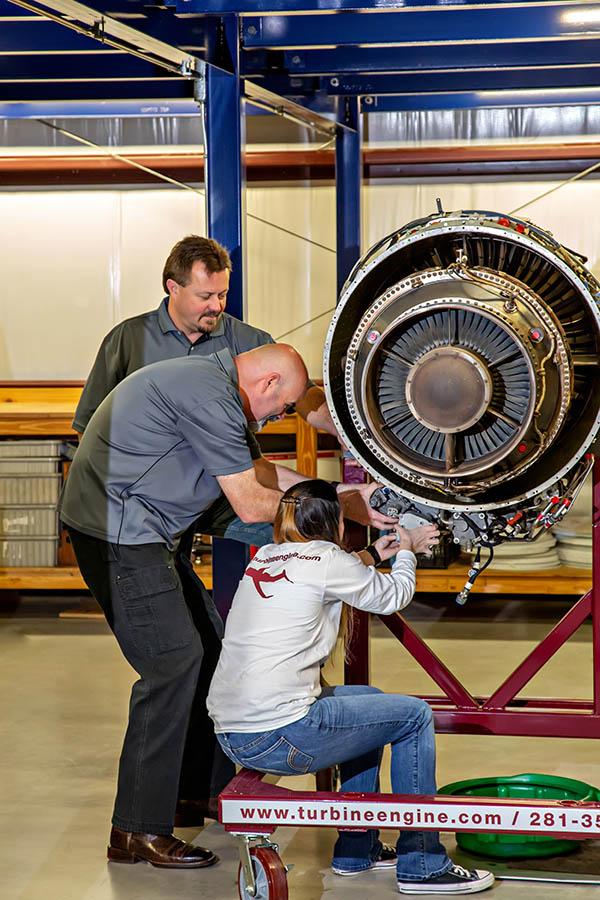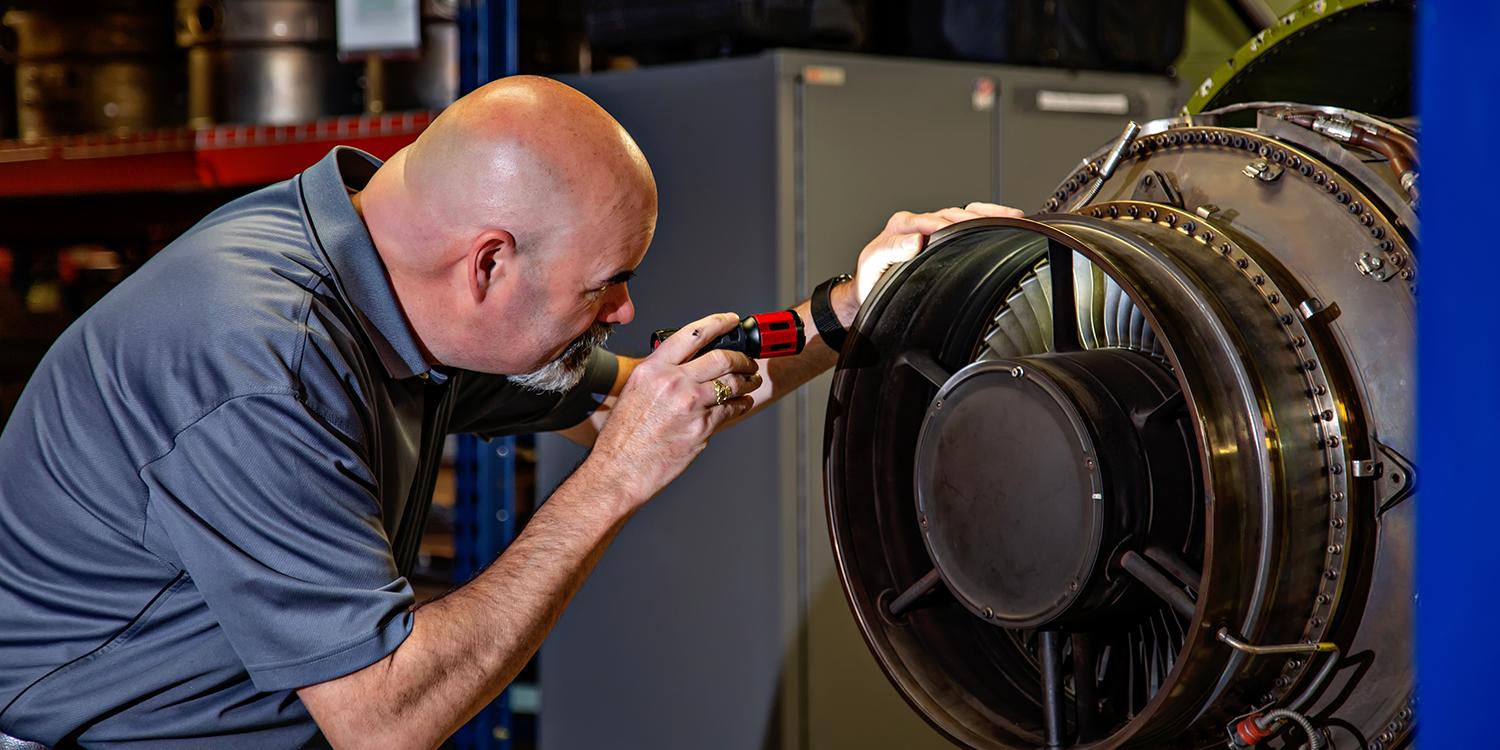TFE731 Maintenance & Servicing
Aviation & Marketing International (AMI) provides the highest available standard of turbine engine service for our worldwide customer base.AMI is your direct, comprehensive link to turbine engine parts and consulting service for Honeywell power plants. AMI's specialties are TFE731 Engines, aviation consulting and the associated services that go along with it.
Providing you with the most comprehensive selection of TFE731 parts, AMI can help you locate any TFE731 part or engine model that you are looking for, no matter where you are in the world.
With our direct access to extensive engine parts, repair and re-work capability, you have the opportunity to substantially reduce your costs of engine maintenance.
For the fastest response to your needs, please send Aviation & Marketing International your quote request.
Aviation & Marketing International (AMI) also serves in aircraft sales and acquisition representation.
Our TFE731 Engine Maintenance Services Include:
- Honeywell TFE731
- Aviation Consulting
- Charter Services
- General Electric
- Technical Support
- Support for TFE731 Hot Section and TFE731 Overhaul
- On-Site Inventory Coupled with Parts Accesibility from an International Networked Database
- Innovative Technology

TFE731 Engine Maintenance to Keep You Flying Smooth
Proper engine care is absolutely vital in the world of jet engine maintenance. Every 3,000 flight cycles or so, an engine must be completely removed and serviced. This amounts to a full-service turbine engine maintenance appointment approximately every five years.Aircraft turbine engines are identified by a unique six-digit number that corresponds to an individualized maintenance schedule. Most maintenance visits will be smaller and more frequent than the major engine overhaul required every five years. They are, however, no less important in keeping your engine in prime condition.
Every engine also keeps a complete history of all data relating to that engine. This is useful information as the engineering specialists, production team members, as well as the customer construct a plan of care based on all data available.
Once a full analysis is completed and a plan is agreed upon, the necessary repairs and turbine engine maintenance are known as the workscope. This workscope is what will keep your aircraft’s engine flying smooth until the next scheduled turbine engine maintenance.

TFE731 Engine Cleaning and Inspection
Before turbine engine inspection can even begin, the engine must be thoroughly cleaned. Any dirt, debris, or oil can alter the visibility of the inspector. This can have catastrophic consequences, so a deep turbine engine cleaning involving multiple liquid agents is a must.Once every inch of the engine is clean and shining, the inspection begins. An external inspection is exactly what it sounds like. An inspector visually examines the outside of the engine, noting any dents, dings, or broken pieces that impact functionality.
The internal inspection is far more high-tech and complicated. The internal inspection of a turbine engine can basically be classified as exploratory surgery. The same methods that are used to inspect the inside of a human being are used to explore the inside of an engine.
The turbine engine is covered in tiny holes that allow access to a small camera attached to a flexible pipe called a borescope. The borescope enters through the holes and travels into the engine. It then visualizes every important corner of the internal parts.
The camera transmits images and video to a large screen where the inspector can then keep an eye out for any red flags. Borescope technology is so advanced, it’s virtually impossible to miss anything that could negatively impact the engine’s performance.
Rotating parts are located in the sections of the engine where a large amount of force is levied. Because of this force, rotating parts wear out far more quickly than static parts. Two areas where this is particularly true are the compressor and the turbine section.
Once all the parts are removed and disassembled, they are inspected. Often, several parts need to be sent to the original manufacturers or to mechanics who specialize in that particular part. Once they arrive, the parts are thoroughly inspected and then repaired and made fully operational.
Disassembly is painstaking, intricate, slow work. Not a single part can be missed in the process. Each part must be assessed based on the standards outlined in its specific manual. Every part must be accounted for. When disassembling, it’s essential that mechanics and inspectors take their time and defer to specialists when needed.
Not all engine parts can be repaired. In fact, many turbine engine parts have a life expectancy and once they reach it, the part must be replaced. In case you think this is no big deal, know that engine parts are expensive. Some single parts cost as much as waterfront property in California.
This is why the inspection and disassembly processes are so vitally important. Not only do they keep an engine running safely and smoothly, they hold the keys to major financial implications.
For the parts that can be repaired, high-tech solutions involving laser cladding or e-beam welding are available. The jet engine repair process often involves such minute adjustments that robots are used to ensure the specificity of the repair.
Whether the parts are repaired or replaced, you’ll likely need to invest a substantial amount of money in this every five years maintenance visit, so plan ahead.
Once the mechanics have rebuilt the turbine engine, the engine must be submitted to intense, thorough testing. This testing will simulate the toughest of situations and forceful conditions, assessing the engine’s responses and durability.
Engine testing takes place inside an insulated bunker known as a test cell. Once all tests are completed to industry standards, the engine is removed from the cell and ready for one final inspection to be completed by a certified inspector. If the engine passes this final inspection, a Certificate of Airworthiness is issued.
This final step signals that the engine is now ready for reinstallation and years of safe, smooth flying.
Contact Aviation & Marketing International Today!
Turbine Engines are complicated, but buying or repairing one doesn't have to be. Call us today at 281-359-3266 for a hassle-free experience, at AMI we stand behind our work, providing quality products and reliable services at an affordable price.

